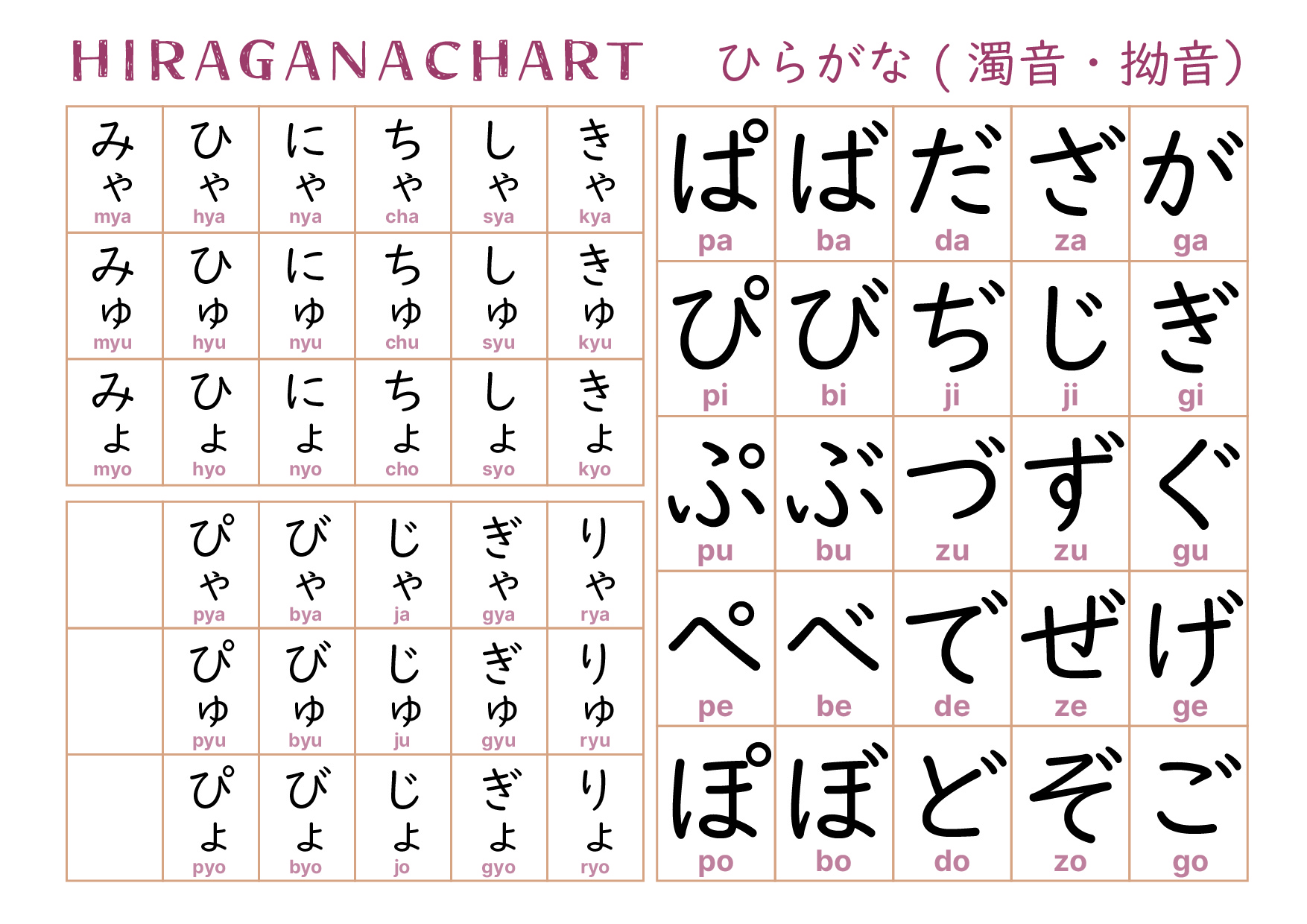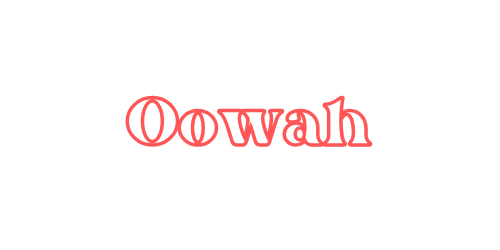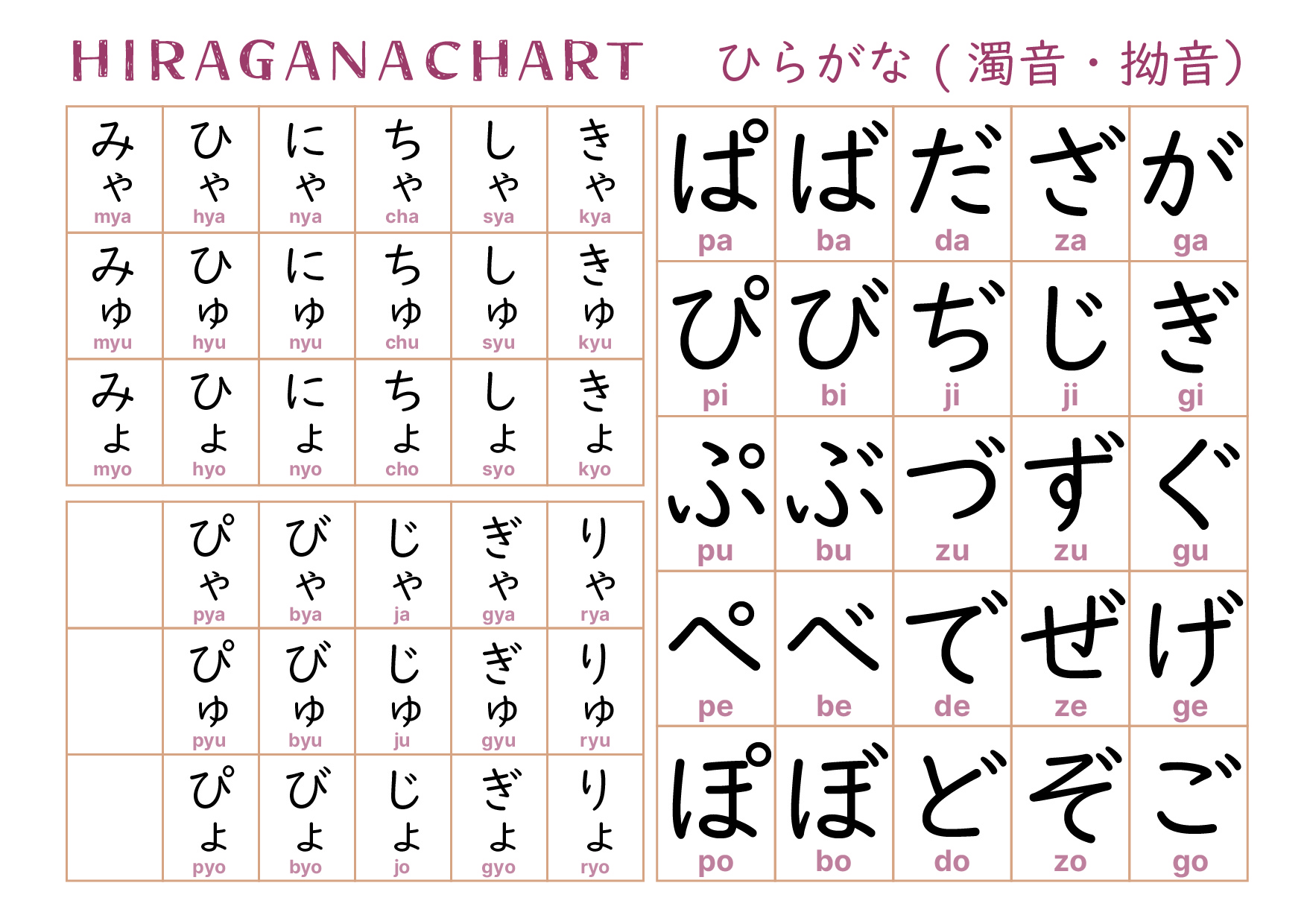
Mastering Dakuten, Handakuten,
and Yōon in Hiragana
If you have already learned basic Hiragana, it’s time to take the next step and master Dakuten (濁音), Handakuten (半濁音), and Yōon (拗音). These modified characters are essential for reading and pronouncing Japanese correctly. In this guide, we’ll explain their usage and provide effective learning tips.
What are Dakuten, Handakuten, and Yōon?
In addition to the basic Hiragana characters, Japanese uses small diacritic marks to modify sounds. These modifications create new pronunciations and expand the range of syllables in the language.
Dakuten (゙) – Voiced Sounds
Dakuten (濁音) is a small mark that looks like two tiny strokes (゙) and is placed on certain Hiragana characters to change their pronunciation.
- K → G: か (ka) → が (ga)
- S → Z: さ (sa) → ざ (za)
- T → D: た (ta) → だ (da)
- H → B: は (ha) → ば (ba)
Handakuten (゚) – P-Sounds
Handakuten (半濁音) is a small circle (゚) used only with H-line Hiragana to create P-sounds.
- H → P:
- は (ha) → ぱ (pa)
- ひ (hi) → ぴ (pi)
- ふ (fu) → ぷ (pu)
- へ (he) → ぺ (pe)
- ほ (ho) → ぽ (po)
Yōon (拗音) – Combination Sounds
Yōon occurs when smaller versions of や (ya), ゆ (yu), よ (yo) attach to certain consonants, creating blended sounds.
- K-line: きゃ (kya), きゅ (kyu), きょ (kyo)
- S-line: しゃ (sha), しゅ (shu), しょ (sho)
- T-line: ちゃ (cha), ちゅ (chu), ちょ (cho)
- N-line: にゃ (nya), にゅ (nyu), にょ (nyo)
- H-line: ひゃ (hya), ひゅ (hyu), ひょ (hyo)
- M-line: みゃ (mya), みゅ (myu), みょ (myo)
- R-line: りゃ (rya), りゅ (ryu), りょ (ryo)
Why Are These Modifications Important?
Understanding these modified sounds is essential because:
- They Appear in Common Words: Many everyday words use Dakuten, Handakuten, and Yōon, such as:
- がっこう (gakkou) – School
- ぴざ (piza) – Pizza
- きゅうり (kyuuri) – Cucumber
- They Improve Pronunciation: Mastering these sounds helps you pronounce Japanese words naturally.
- They Are Used in Kanji Readings: When reading Kanji, many words require knowledge of these modified sounds.
How to Learn Dakuten, Handakuten, and Yōon Effectively
- Write and Repeat: Practice writing each modified character while saying it aloud.
- Use Flashcards: Create flashcards to test recognition and pronunciation.
- Read Simple Words: Try reading words with Dakuten, Handakuten, and Yōon.
- Listen to Native Pronunciation: Watching Japanese videos or listening to audio helps with correct pronunciation.
- Practice with Hiragana Games: Interactive games make learning fun and engaging.
Conclusion
Mastering Dakuten, Handakuten, and Yōon will significantly improve your Japanese reading and speaking skills. With regular practice and the right learning methods, you’ll become more confident in recognizing and pronouncing these essential sounds.
Start practicing today and take your Japanese learning to the next level!

